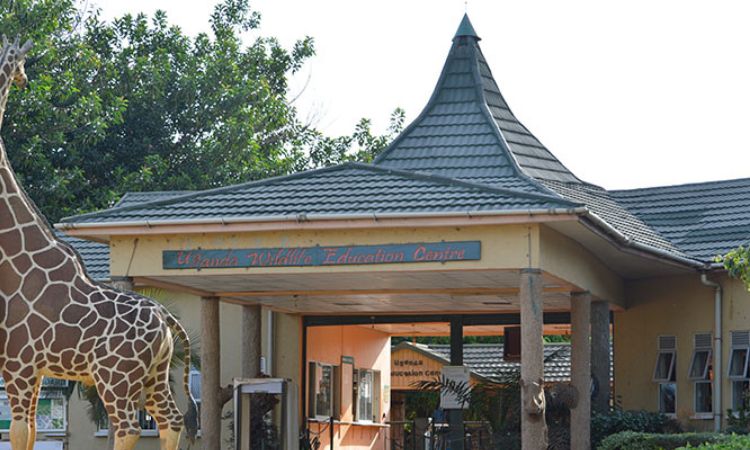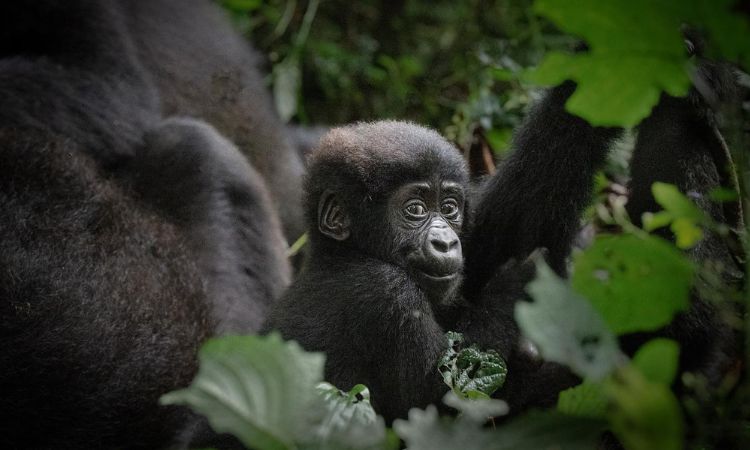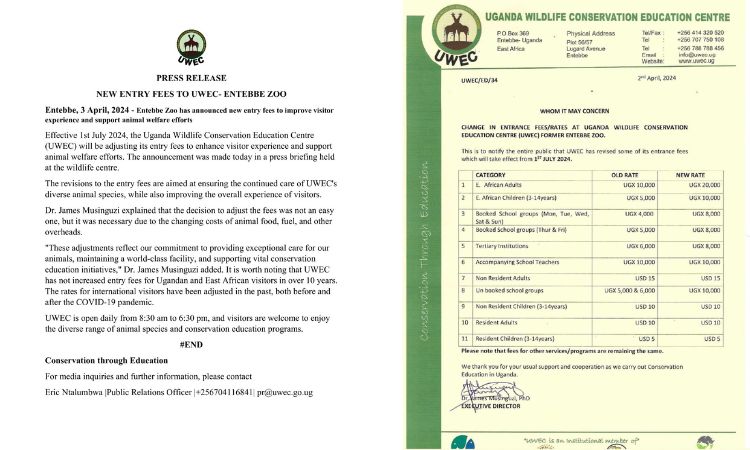Entebbe Zoo Uganda – Open Time, Entrance Fees, Location & More
Entebbe Zoo: Visit Entebbe Zoo, also known as Uganda Wildlife Education Centre. See lions, elephants & chimpanzees. Get updated fees, opening hours & travel tips.
Nestled along the shimmering shores of Lake Victoria, the Entebbe Zoo, officially known as the Uganda Wildlife Education Centre (UWEC), stands as one of Uganda’s most captivating wildlife attractions.
Just a stone’s throw from Entebbe International Airport, this sanctuary offers an unforgettable introduction to wildlife in Uganda for tourists, families, and conservation enthusiasts alike.
Whether you’re planning things to do in Entebbe Zoo, seeking out the fascinating animals at Entebbe Zoo, or curious about the Entebbe Zoo entrance fee and Entebbe Zoo location, a visit here promises close encounters with native species while highlighting vital conservation in Uganda.
As a family-friendly attraction in Entebbe, it’s the perfect day trip from Kampala, blending education, adventure, and eco-tourism.
In this comprehensive guide, we’ll explore everything you need to know to plan your visit to Entebbe Zoo Uganda and make it a highlight of your Ugandan adventure.
The Rich History and Background of Entebbe Zoo
The story of the Entebbe Zoo is one of transformation, from a colonial-era outpost to a beacon of conservation in Uganda.
Established in 1952 by the British colonial government, UWEC began as a modest reception center for wildlife casualties—injured, orphaned, or confiscated animals seized from illegal trade.
It served as a lifeline for creatures displaced by human encroachment and poaching, providing care in the lush environs of Entebbe Zoo location along Lake Victoria.
By the early 1960s, it evolved into a traditional zoo, earning its affectionate nickname “Entebbe Zoo” among locals. During this phase, non-indigenous species like bears and tigers were introduced as crowd-pleasers, drawing visitors eager for exotic spectacles.
However, Uganda’s post-independence challenges, including political turmoil, led to neglect, and by the 1990s, the facility teetered on collapse.
The turning point came in May 1994, when wildlife management was restructured under the Uganda Wildlife Education Centre Trust. This shift refocused the center on conservation education, rehabilitation, and public awareness.
Today, spanning 72 acres of forest, wetland, and savanna habitats, UWEC rehabilitates hundreds of animals annually and educates thousands through interactive programs.
Its role in wildlife in Uganda extends beyond enclosures, fostering a national ethic of biodiversity protection. As one of the best places to visit in Entebbe, it embodies Uganda’s commitment to sustainable tourism and animal welfare.
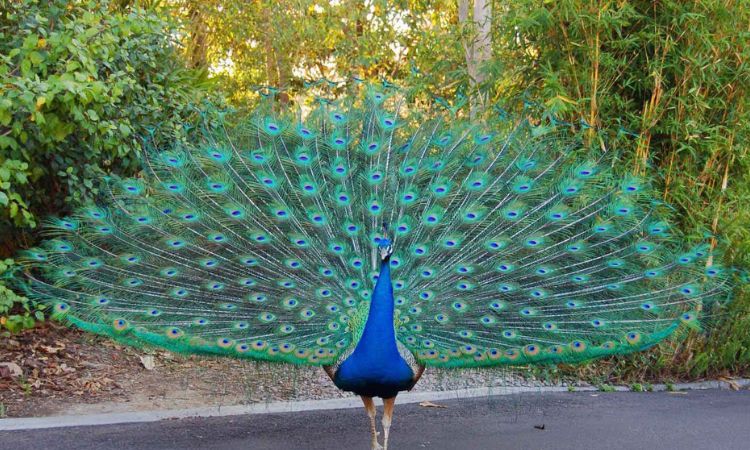
Incredible Animals You Can See at Entebbe Zoo
One of the top things to do in Entebbe Zoo is marvel at its diverse residents, all native to Uganda’s ecosystems. Unlike vast national parks, UWEC allows intimate views in spacious, naturalistic enclosures, making it ideal for family-friendly attractions in Entebbe. Here’s a breakdown of the stars:
Big Cats
Spot majestic lions lounging in shaded groves or elusive leopards prowling their territories—both symbols of Uganda’s savanna prowess. Cheetahs, with their spotted elegance, often make cameo appearances during feeding times.
Primates
Chimps swing and socialize in forested aviaries, showcasing their intelligence through tool use and social bonds. Meet red-tailed and vervet monkeys, playful mischief-makers that might even “welcome” you at the gates. These primates highlight UWEC’s breeding programs for endangered species.
Hoofed Mammals and Icons
Towering giraffes (including rare Rothschilds) nibble acacia leaves, while zebras, elephants, and rhinos roam open paddocks. Don’t miss the Uganda kob, topis, impalas, elands, buffaloes, and warthogs—a mini-savanna teeming with life.
Reptiles and Birds
Venture into the reptile house for crocodiles, snakes, and turtles, where guides explain their ecological roles. Over 120 bird species, from flamboyant peacocks and ostriches to the prehistoric shoebill stork and colorful parrots, flutter through aviaries. Lake Victoria’s edge adds wild birds to the mix, perfect for photographers eyeing “animals at Entebbe Zoo.”
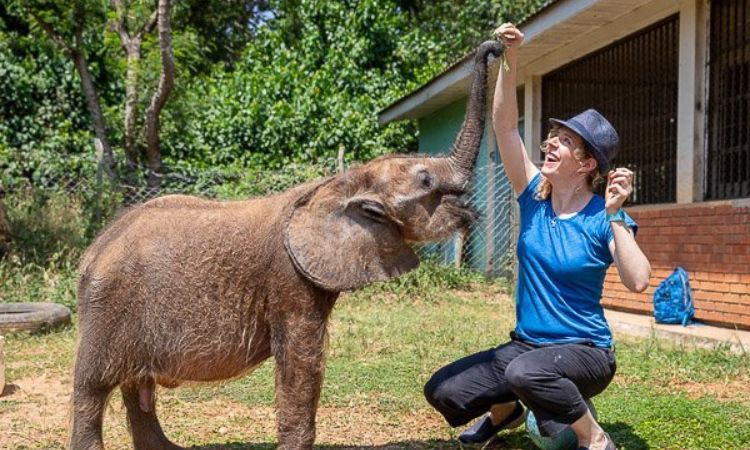
Exciting Things to Do at Entebbe Zoo
Beyond observation, things to do in Entebbe Zoo immerse you in Uganda’s wild heart. Opt for guided tours (UGX 10,000 extra) to learn animal behaviors and conservation stories from expert keepers. Animal feeding sessions let you toss hay to giraffes or watch crocs snap up fish—safe, supervised thrills.
For deeper dives, book the “Keeper for a Day” program (UGX 150,000–250,000), where you prep meals, join briefings, and feed lions or rhinos alongside staff.
The “Behind-the-Scenes” tour (UGX 50,000) reveals veterinary care and rehab wards, while “Chimpanzee Close-Up” (UGX 30,000) offers primate insights. Educational programs suit school groups, tying into Uganda’s curriculum on biodiversity.
Nature lovers can hike the forest trail or join the “Noah’s Ark Discovery Tour” for kid-friendly animal facts. Boat rides on Lake Victoria (UGX 20,000) from the pier spot hippos and birds, blending wildlife in Uganda with scenic relaxation.
Photography ops abound—capture zebras at golden hour or chimps in play. As a day trip from Kampala, these activities make UWEC a versatile gem among best places to visit in Entebbe.
Entebbe Zoo Entrance Fees and Opening Hours
Practical info is key for seamless planning. Here’s a quick table for Entebbe Zoo entrance fee and hours (updated 2025 rates; verify on-site as they may fluctuate):
|
Category |
Fee (UGX) |
Fee (USD approx.) |
|
Ugandan Adults |
15,000 |
$4 |
|
Ugandan Children (6-12) |
5,000 |
$1.35 |
|
Foreign Adults |
40,000 |
$11 |
|
Foreign Children (6-12) |
20,000 |
$5.40 |
|
Students (with ID) |
10,000–20,000 |
$2.70–$5.40 |
Opening Hours: Daily, 8:30 AM – 6:30 PM (last entry 5:00 PM). Mornings are best for active animals; afternoons for birdwatching. This accessibility cements UWEC as a top family-friendly attraction in Entebbe.
How to Get to Entebbe Zoo
Conveniently positioned at Plot 56/57 Lugard Avenue (coordinates: 0.0642° N, 32.4464° E), the Entebbe Zoo location is a breeze to reach.
From Entebbe International Airport, it’s a quick 10-minute (5 km) taxi ride (UGX 10,000–15,000). Airport transfers are plentiful—book via apps or hotels for hassle-free arrivals.
From Kampala, the 40 km journey takes 45 minutes–1 hour via the Kampala-Entebbe Expressway (taxi: UGX 50,000/$13.50; shared minibus: UGX 5,000–10,000/$1.35–$2.70 from Clock Tower Taxi Park).
Rent a 4×4 for comfort, especially in rainy seasons—link to Uganda car hire services for seamless exploration. Public boda-bodas (motorbikes) offer budget zips but prioritize safety helmets. Uber/Bolt operate reliably too.
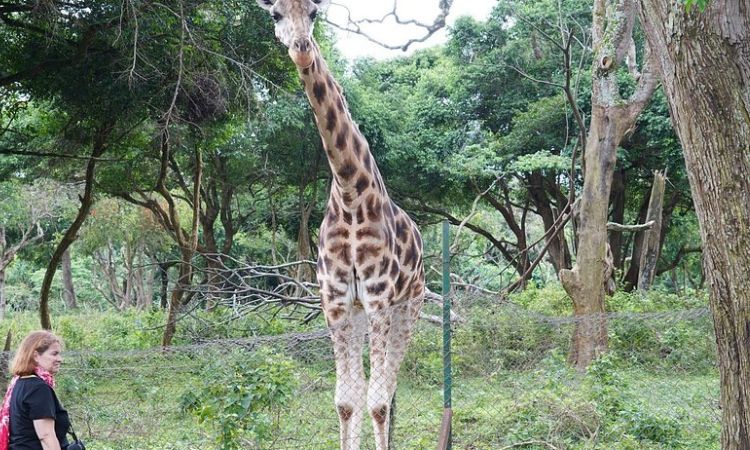
Nearby Attractions and Accommodation
Extend your visit to Entebbe Zoo Uganda with these gems. The Uganda Reptile Village (2 km away) slithers with crocs and pythons for a reptilian thrill. Stroll the historic Entebbe Botanical Gardens (3 km), planted in 1898 with equatorial flora and monkey troops—perfect for picnics.
Unwind on Lake Victoria beaches like Lido or Aero (5 km), with sands, kayaks, and sunset cruises. Shop local crafts at Entebbe Craft Market (1 km) for beads and baskets.
Stay nearby: Protea Hotel by Marriott (luxury, lake views, $150/night), Lake Heights Hotel (mid-range, family suites, $80/night), or budget Airport Link Guest House ($40/night). All within 5 km, many offer zoo shuttles.
UWEC’s Pivotal Role in Conservation and Education
At its core, the Uganda Wildlife Education Centre champions conservation in Uganda. It rescues 100+ animals yearly from poaching and accidents, operating a full veterinary hospital for rehab.
Breeding programs bolster endangered species like Rothschild giraffes and Uganda kobs, supporting rewilding efforts.
Partnerships with schools deliver experiential learning—live demos link to national curricula, inspiring youth to combat habitat loss.
Research collaborations yield data on biodiversity, while public programs foster ethics: workshops on anti-poaching and sustainable living.
As a CITES-designated rescue center, UWEC combats illegal trade globally. Visiting supports this—your ticket funds patrols and education, making Entebbe Zoo a force for Uganda’s 1,061 bird species and iconic mammals.
Essential Travel Tips for Your Entebbe Zoo Visit
Maximize your trip with these pointers. Best time to visit Entebbe Zoo: Mornings (8:30–11 AM) for cooler temps and lively animals; late afternoons for fewer crowds and bird song. Dry season (June–September, December–February) avoids mud, but year-round appeal shines.
Wear comfy shoes for 2–3 km walks, light layers (it hits 30°C/86°F), hat, sunscreen, and insect repellent—tsetse flies lurk. Bring water, snacks (picnic areas available), and binoculars for birds.
Family-friendly facilities include playgrounds, restrooms, and stroller paths; accessibility ramps aid wheelchairs, though some trails are uneven—call ahead for assisted tours.
Pack cash for fees; cards work at the shop. No drones or flash photography near animals. For eco-tips, use reusable bottles and follow “leave no trace.” Combine with a day trip from Kampala for efficiency.
FAQ: Common Questions About Visiting Entebbe Zoo
Q: What is the entrance fee for Entebbe Zoo?
A: Foreign adults pay UGX 40,000 ($11); kids UGX 20,000 ($5.40). Locals: UGX 15,000 adults, UGX 5,000 kids.
Q: Where is Entebbe Zoo located?
A: Plot 56/57 Lugard Avenue, Entebbe, on Lake Victoria’s shores (0.0642° N, 32.4464° E)—10 mins from the airport.
Q: How long does a visit take?
A: 2–4 hours for basics; 5–6 with activities like Keeper for a Day.
Q: Are there restaurants inside Entebbe Zoo?
A: Yes—a shaded café serves Ugandan dishes (matooke, fish); picnics welcome.
Q: Can you touch or feed animals at Entebbe Zoo?
A: Supervised feeding yes (giraffes, birds); no touching predators for safety.
For more, visit the official UWEC website. Explore best safari parks in Uganda next.
In wrapping up, the Entebbe Zoo isn’t just a stop—it’s a gateway to wildlife in Uganda‘s soul. Plan your visit today and join the conservation chorus!
